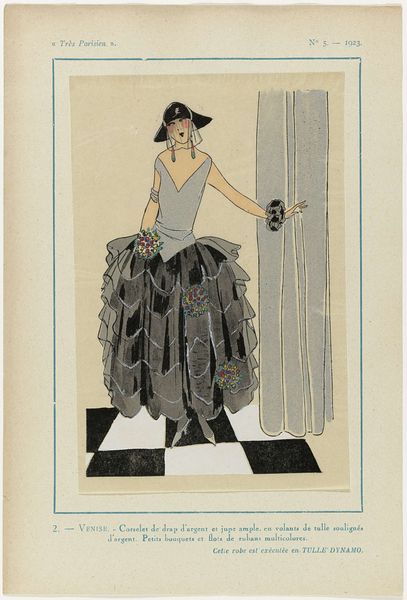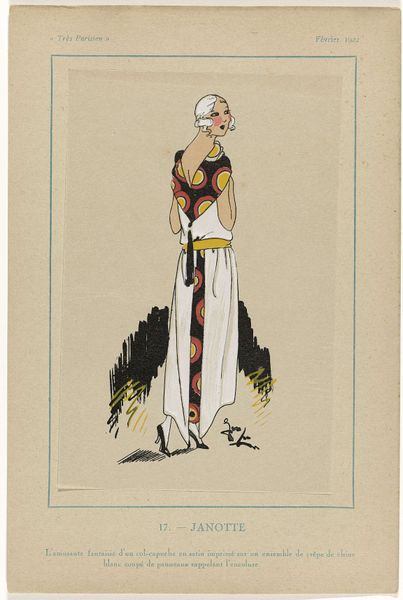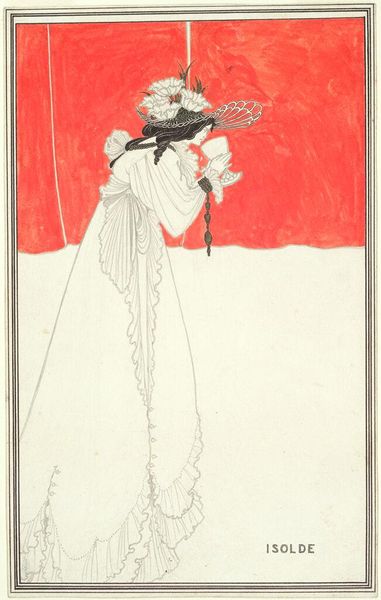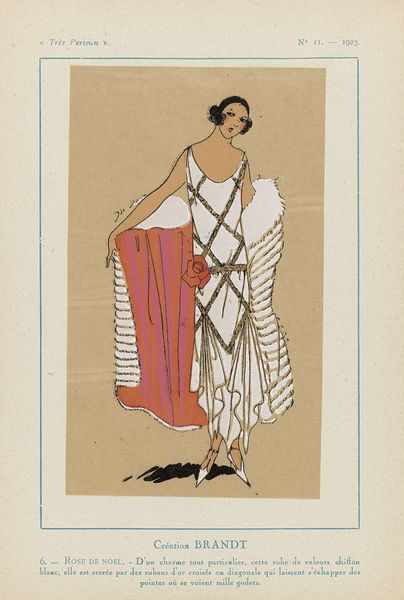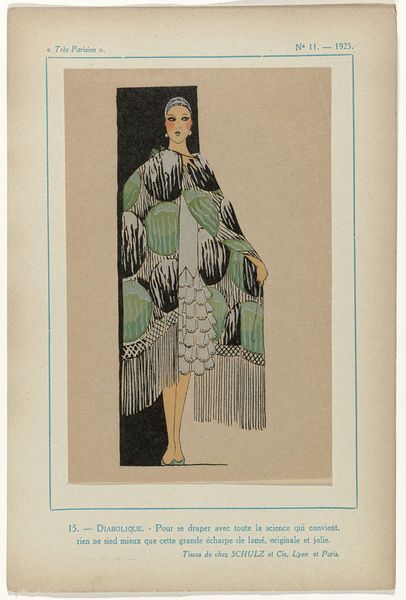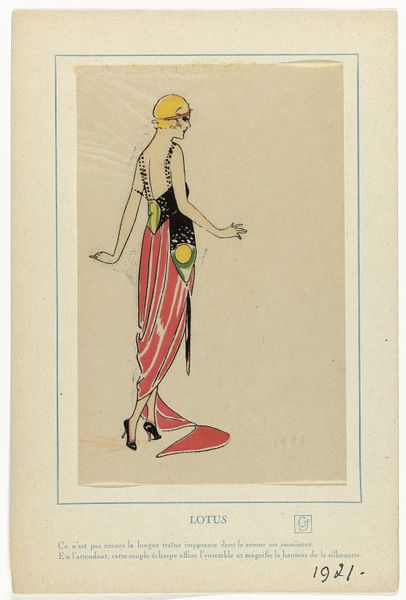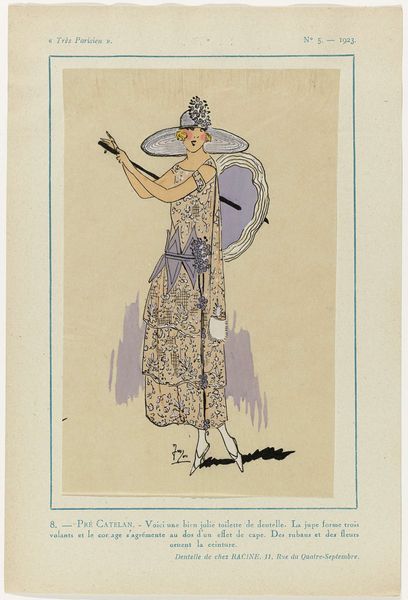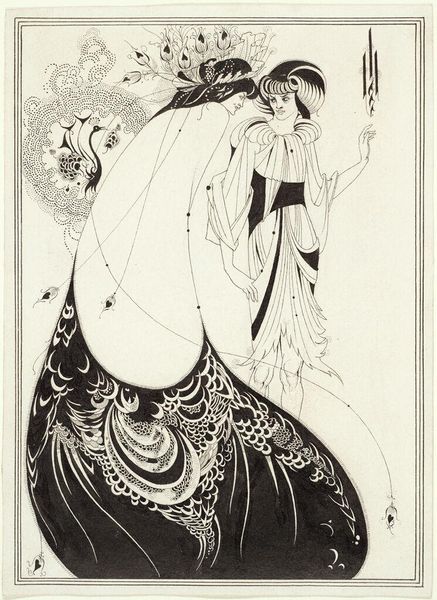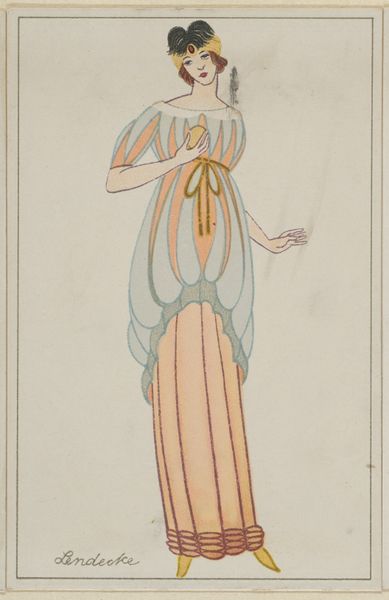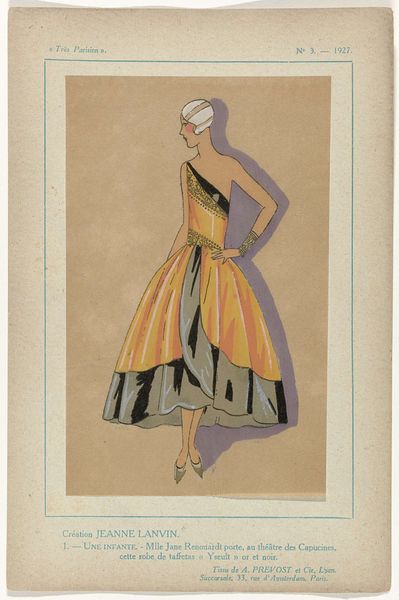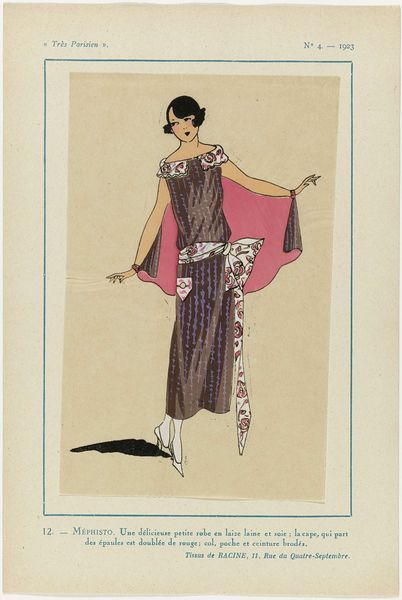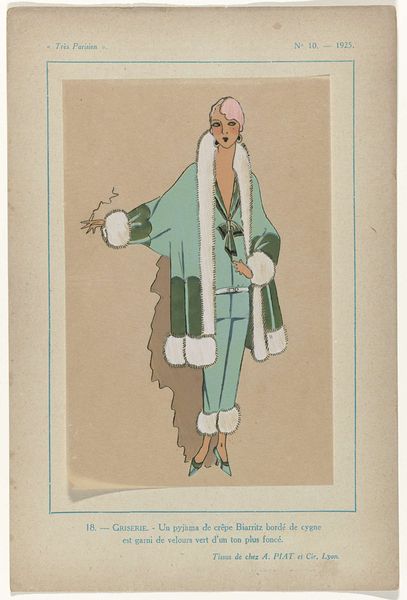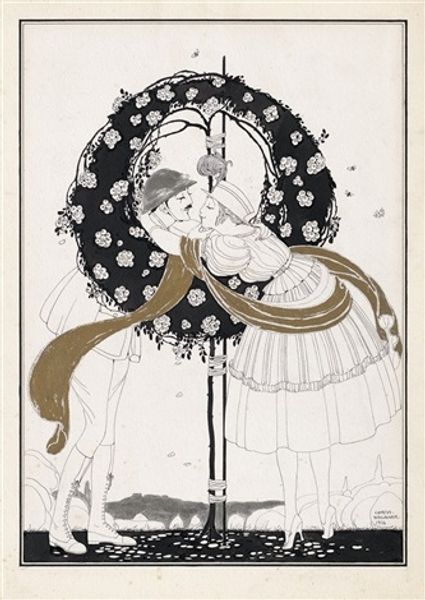
print, watercolor
#
portrait
#
art-deco
# print
#
watercolor
#
watercolour illustration
Dimensions: height 195 mm, width 120 mm, mm
Copyright: Rijks Museum: Open Domain
Editor: This is "Trés Parisien, 1926, No. 1, Pl. 9: - INNOCENCE" by G-P. Joumard, a watercolor print at the Rijksmuseum. It has such a sleek Art Deco sensibility and depicts a bride in a flapper-style dress. What strikes me is the flatness, but the description mentions a blend of velvet and white lace. What do you see in this piece? Curator: What immediately captures my attention is the material construction of the image itself. It's a print meant for mass consumption, using watercolor to simulate the luxury of velvet and lace, which speaks volumes about the aspirations of the consumer culture in the 1920s. Notice the title "Trés Parisien", suggesting high fashion is both desirable and attainable. Consider the labor involved: an original design, its translation into a print, and then the dissemination to a wider audience. How does the mechanical reproduction alter the perception of 'innocence' in the depicted garment? Editor: That's a great point. Thinking about it as mass-produced fashion shifts the focus away from the supposed purity of the bride to the commodification of that ideal. So, it's less about the emotion and more about what it represents materially and socially? Curator: Exactly. It's a commodity playing on the imagery of 'innocence', creating desire and driving consumption. Even the medium—a watercolor print, rather than, say, an oil painting—suggests accessibility and reproduction. How do you think the choice of watercolor enhances or detracts from the luxurious textures being represented? Editor: It makes it seem…more aspirational than realistic. Like, this is what you *could* have, maybe. So it enhances the desire for the textures without being truly luxurious in itself. Curator: Precisely. The material conditions of its creation directly inform our reading of its content. Understanding this helps us decode the values and anxieties embedded within seemingly simple images. Editor: I see the piece very differently now. It is so interesting to consider it within the context of its production and how that impacts the interpretation of something like "innocence". Curator: Indeed. The focus on process allows us a critical lens, prompting deeper inquiries and offering unique insight into culture and historical values.
Comments
No comments
Be the first to comment and join the conversation on the ultimate creative platform.
